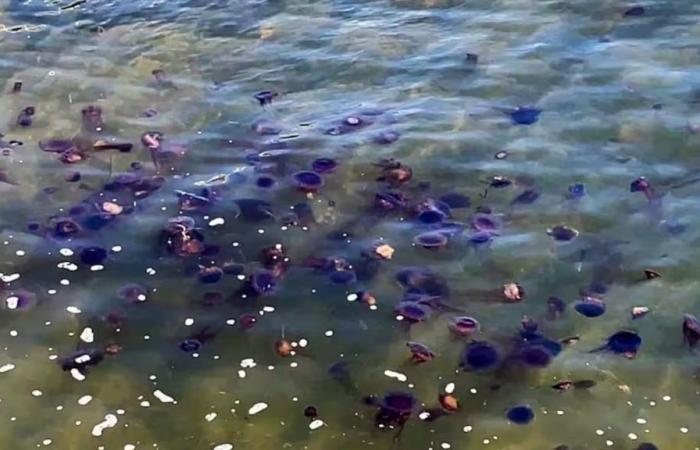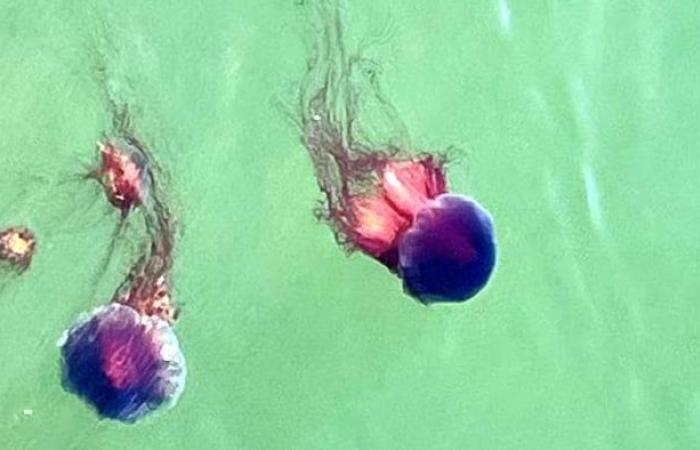It is normal to see some jellyfish in the port of Charlottetown in Prince Edward Island this time of year. But their presence in the hundreds is an early phenomenon which attracts the attention of the curious.
Many people exclaim when they see them, according to the director of the boating club in Charlottetown, Reid Barnett.
At times, you can almost walk on the water thanks to them, there are so many
jokes Mr. Barnet.
He adds that the presence of numerous jellyfish does not harm navigation, but he would not dive among them.
It’s everywhere
Passersby notice the jellyfish every day and stop to photograph them.
I walk around a bit and see a lot of jellyfish. Everywhere I look I see jellyfish. Literally, they are everywhere
affirms Fred Rohdea tourist from Ontario.
Open in full screen mode
Tourist Fred Rohde, from London, Ontario, says jellyfish are everywhere in Charlottetown Harbour.
Photo: Radio-Canada
However, residents believe that it is early to see so many.
It’s very different. Since about the beginning of May I’ve been seeing a lot of jellyfish near the dock, which is a bit surprising
judge Marlene Hunta resident.
There are probably a few hundred of them around and they are grouped in different colors, red and yellow
indicates another resident, Katherine Ball.
mrs ball adds that she sometimes goes jet skiing in the area and would not like to fall into the water among the jellyfish.
They thrive in warm waters
These are probably cyaneas (Cyanea capillata) according to the Department of Fisheries and Oceans (DFO). The tentacles of these jellyfish are stinging.
Some of them in the harbor are about the size of a basketball, but they have not yet reached their full size.
Swarms of this size usually occur later in August, sometimes in early fall
explains a biologist from DFO, Jeff Clements.
Open in full screen mode
These jellyfish in Charlottetown are probably cyanea.
Photo: Radio-Canada / Sheehan Desjardins
These jellyfish have the particularity of growing very quickly when they have a lot of food and the temperatures are mild and warm.
specifies Mr. Clements.
Climate change causing warming Atlantic waters may be a cause of the presence of so many jellyfish at the moment, according to the biologist.
Jeff Clements adds that there is nothing to worry about long-term consequences of the presence of jellyfish, but he notes that they eat the same food as fish.
According to a report from Sheehan Desjardins, CBC







